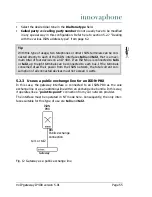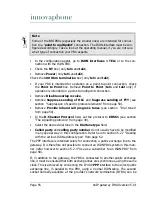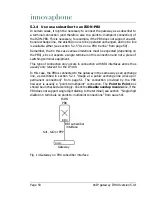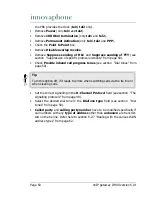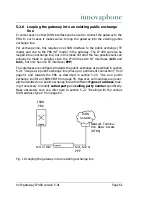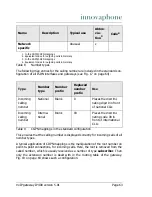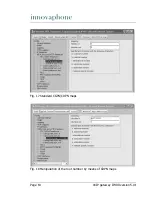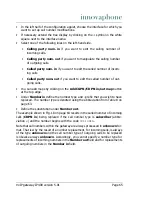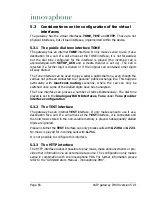
Page 52
VoIP gateway IP400 version 5.01
• Use as an IP router to manually dial-up an ISP or the company network. In
this way, the gateway and the LAN connected to its Ethernet port are con-
nected to the Internet or Intranet. A separate IP-ISDN router is no longer
required.
• Use as an IP router for operation on a permanent connection (IP 400 only).
In this way, the gateway is connected to a remote PPP entity (at the ISP or in
the company network) via a 64 kbit/s or 128 kbit/s permanent ISDN connec-
tion.
The specific configuration varies depending on whether the public exchange line
is configured as a “
point-to-point
”, “
point-to-multipoint
” or “permanent con-
nection”.
Furthermore, the type of signalling for dial-up needs to be set correctly. On public
exchange lines EDSS1 signalling is always used, whilst on connections to PBXs the
relevant choice may also be a variant of QSIG (see section “The signalling proto-
cols” from page 49). Signalling is of no significance for permanent connections.
• In the configuration applet, go to
ISDN interfaces > TEL1
or to the con-
nection with the public exchange line.
• Remove
NT
(only
tel1
and
tel2
).
• Remove
Power
(only
tel1
and
tel2
).
• Remove
100 Ohm termination
(only
tel1
and
tel2
).
• Remove
Permanent Activation
(only
tel1
,
tel2
and
PPP
).
• If your public exchange line is the point-to-point type, check the
Point to
Point
box. Remove
Point to Point
if it is a point-to-multipoint connection.
This setting is irrelevant for permanent connections. If the connection is
operated in mixed mode (one B channel permanently used for a fixed con-
nection, one B channel in dial up mode), the setting depends on the operat-
ing mode of the dial-up line (
tel1
,
tel2
and
PPP
only).
• Remove
Disable overlap receive
.
• Remove
Suppress sending of HLC
and
Suppress sending of FTY
(see
section “Suppression of specific protocol elements” from page 50).
Note
If you are uncertain about the configuration of your line, consult your network
administrator or your ISDN network provider.


















